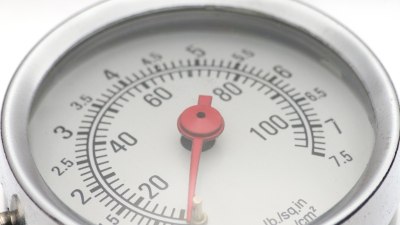Can Animals Sense a Storm Before It Hits: The Science of Instinct
Explore the fascinating ability of animals to sense storms and the science behind their instincts.

Image by kuritafsheen77 on Freepik
The natural world is full of mysteries, and one of the most intriguing phenomena is the ability of animals to sense impending storms. Many pet owners have witnessed their dogs acting strangely before a storm, while birds may suddenly take flight or insects may scurry to shelter. This phenomenon raises the question: how do animals know a storm is coming? The science of instinct offers some explanations worth exploring.
Understanding Animal Senses
Animals possess a range of sensory abilities that often exceed those of humans. While we rely primarily on our vision and hearing, many animals have enhanced senses that allow them to detect environmental changes. For example, dogs have an extraordinary sense of smell, which enables them to detect changes in air pressure and humidity. Similarly, birds possess excellent vision and can perceive colors and movements that are invisible to the human eye.
Pressure Changes
One of the most critical factors that animals sense before a storm is the change in atmospheric pressure. As a storm approaches, the barometric pressure drops. This drop can signal to animals that a storm is imminent. For instance, dogs may become restless or anxious when they detect this change, prompting them to seek shelter. Research has demonstrated that dogs can sense pressure changes as subtle as a few millibars, which can alert them to an oncoming storm much sooner than humans would notice.
Humidity and Temperature Variations
In addition to pressure changes, fluctuations in humidity and temperature can also alert animals to impending weather changes. Many species, such as bees and certain types of birds, are particularly sensitive to humidity levels. Bees, in particular, may return to their hives in large numbers just before a storm hits, indicating their instinctual response to changes in humidity. Similarly, some birds will fly to lower altitudes as a storm approaches to escape high winds and rain. This behavior illustrates how animals constantly adjust their actions based on environmental cues.
Electric Fields
Interestingly, some animals can also detect electric fields generated by changes in atmospheric conditions. Animals such as sharks, rays, and some species of fish can sense electric fields in the water, allowing them to navigate and react to their environment. This sensitivity extends to land animals as well; for example, certain insects are known to detect changes in electric fields preceding a storm. This remarkable ability showcases the diverse ways animals can interpret and respond to their surroundings.
Behavioral Changes Before a Storm
Observing the behavior of animals before a storm can provide valuable insights into their instincts. Many pet owners report that their dogs exhibit signs of anxiety or restlessness before a storm, such as whimpering, pacing, or seeking comfort. Cats may hide or act unusually clingy. Birds can be seen flocking together or taking to the trees earlier than usual. Such behavioral changes serve as indicators not only of an imminent storm but also of an animal's intrinsic ability to sense danger.
Scientific Studies
Numerous scientific studies have aimed to understand the mechanisms behind animals’ ability to predict storms. Researchers have conducted experiments to assess how animals respond to changes in atmospheric pressure, temperature, and humidity. One study involving dogs showed that they could predict storms up to 12 hours in advance by exhibiting anxious behaviors. Another research project involving various bird species corroborated the notion that these animals respond not only to visual cues but also to auditory signals and changes in air pressure. Such studies enhance our understanding of animal behavior during transitional weather conditions.
The Role of Instinct
Instinct plays a pivotal role in how animals detect storms and react to them. While some of these behaviors are innate, passed down through generations, others may be learned or refined through individual experiences. This combination of instinct and learning enables animals to navigate their surroundings effectively. The instinctual response to storms is a survival mechanism, helping them seek shelter, avoid dangers, and remain safe during extreme weather events.
Animal Adaptation to Weather Patterns
Over time, animals have adapted to their specific environments and weather patterns. For instance, animals that live in areas prone to hurricanes exhibit behaviors that differ from those in regions that experience tornadoes or thunderstorms. This adaptation shapes their responses to impending storms and may enhance their survival rates. Species like the Arctic fox have developed exceptional instincts that allow them to navigate severe weather conditions, demonstrating the vast range of animal responses to atmospheric changes.
Humans and Animal Sensitivity
Interestingly, humans have often looked to animals for guidance in predicting weather. Indigenous cultures have long observed animal behavior as a means of forecasting storms. This reliance on animal senses illustrates the deep connection between humanity and the natural world. While modern science quantifies weather predictions with technology, many people still regard animals as dependable indicators of upcoming weather changes.
The Symphony of Nature's Signals
In conclusion, the ability of animals to sense storms is a remarkable intersection of instincts, enhanced sensory perception, and adaptation to environmental changes. Through understanding the science of animal instincts, we can appreciate the intricate web of interactions within our ecosystems. As we continue to study these behaviors, we gain valuable knowledge about nature's signals and the incredible ways in which animals inform us about the world around us. So, the next time you notice your pet acting unusual before a storm, remember that it is not just a coincidence; it is nature's instinct at work.











